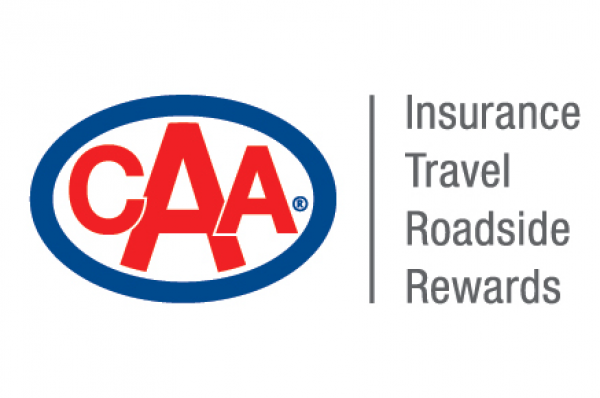Winnipeg, MB, March 9, 2022 – After a winter of straddling icy ruts, Manitobans will soon be playing ‘dodge the potholes’ this spring. Worried about your safety as a cyclist or pedestrian? Think a roadway is poorly designed? Voting is now open for the annual CAA Worst Roads campaign and CAA Manitoba is giving everyone the opportunity to voice their concerns about the bad roads in their community.
“We are very proud to say that this annual advocacy campaign has influenced change for 10 years,” said Heather Mack, Manager, Government and Community Relations at CAA Manitoba. “As we kick off another year of the campaign, we are calling on all Manitobans to vote for their Worst Roads today and join the community of drivers, cyclists, transit riders and pedestrians committed to improving our roads.”
The campaign informs all levels of government which roadway improvements are top of mind for Manitobans, and where improvements could be prioritized. Manitobans can vote on issues ranging from congestion, potholes, poor road signs and the timing of traffic lights to pedestrian and cycling safety.
In 2021, four of the Top 5 Worst Roads were outside of Winnipeg, including Provincial Roads 307, 250, 450 and Trunk Highway 34.
“The key to economic recovery is the investment in roads and supporting infrastructure because when we invest in our roads, we also create jobs,” said Mack. “Throughout the pandemic, our roads have been the arteries used every day to keep essential workers, goods and services flowing. Now more than ever, funding for roadway improvements and proper infrastructure needs to be consistent to ensure that quality and safety is maintained for everyone.”
Potholes and poor road conditions are often the most common issues noted by road users and can cost motorists thousands of dollars in repairs when damage to vehicles is caused. The average cost of repairing pothole damage to a vehicle is more than $300, with some fixes topping $6,000 depending on the make and model of the car. According to the 2019 Canadian Infrastructure Report Card Spending, one dollar on pavement preservation may eliminate or delay spending $6-$10 on costly repairs later.
“As the inventory of vehicles continues to remain scarce due to the global semiconductor chip shortage, more people are now trying to hold on to their cars for longer. Not only can poor roads cause damage to vehicles but they also heavily contribute to the wear and tear of tires and increased fuel consumption which is why the maintenance and quality of our roadways is even more important than ever.”
Success stories over the last 10 years are a result of governments prioritizing infrastructure through multi-year capital investments. Some examples include:
Empress Street, Winnipeg
- Empress Street was long in the top 10 for worst roads in Winnipeg, last appearing in 2019.
- In 2021, the City of Winnipeg’s improvements for Empress Avenue were completed, including new pedestrian ramps on Portage Avenue and Empress, and a new bi-directional bike path stemming from the Assiniboine River.
- St. James Coun. Scott Gillingham said he has wanted to see this project completed since he was first elected in 2014, saying “the residents told me many times that roads were the number one issue, specifically around the Polo Park area, so I'm glad to see this project completed.”
St. James Street, Winnipeg
- St. James Street was often referred to as “driving on the moon” thanks to numerous potholes and poor patching jobs that rarely survived a season.
- Add general congestion due to its proximity to Polo Park, and St. James Street also appeared several times on our list, last appearing as No. 6 in 2019.
- Since 2017, major rehabilitation of St. James Street has been underway, including complete removal of some sections and intersections to be fully replaced. The work is expected to continue for 2022.
Nominations for CAA’s Worst Roads can be cast at caaworstroads.com until April 6. To encourage participants to act on their concerns, they will be entered to win a Grand Prize of a $500 Best Western gift card and $200 Ultimate Dining card; secondary prize of a $500 Olympia Ski and Cycle gift card, along with weekly draws for $50 Ultimate Dining cards.
Once voting is closed, CAA will compile a list of the 10 Worst Roads in Manitoba, along with the Worst Roads in regions across the province. The regional top five lists will help shine further light on the state of local roads in municipalities across Manitoba.
CAA will present the list of 2022 Worst Roads to local and provincial officials to help inform future funding and planning decisions.
The top 10 CAA Worst Roads in Manitoba in 2021 were:
1. Taylor Avenue, Winnipeg
2. Provincial Road 307
3. Provincial road 250
4. Provincial Road 450
5. Trunk Highway 34
6. Saskatchewan Avenue, Winnipeg
7. St. James Street, Winnipeg
8. Sherwin Road, Winnipeg
9. Waller Avenue, Winnipeg
10. Empress Street, Winnipeg





